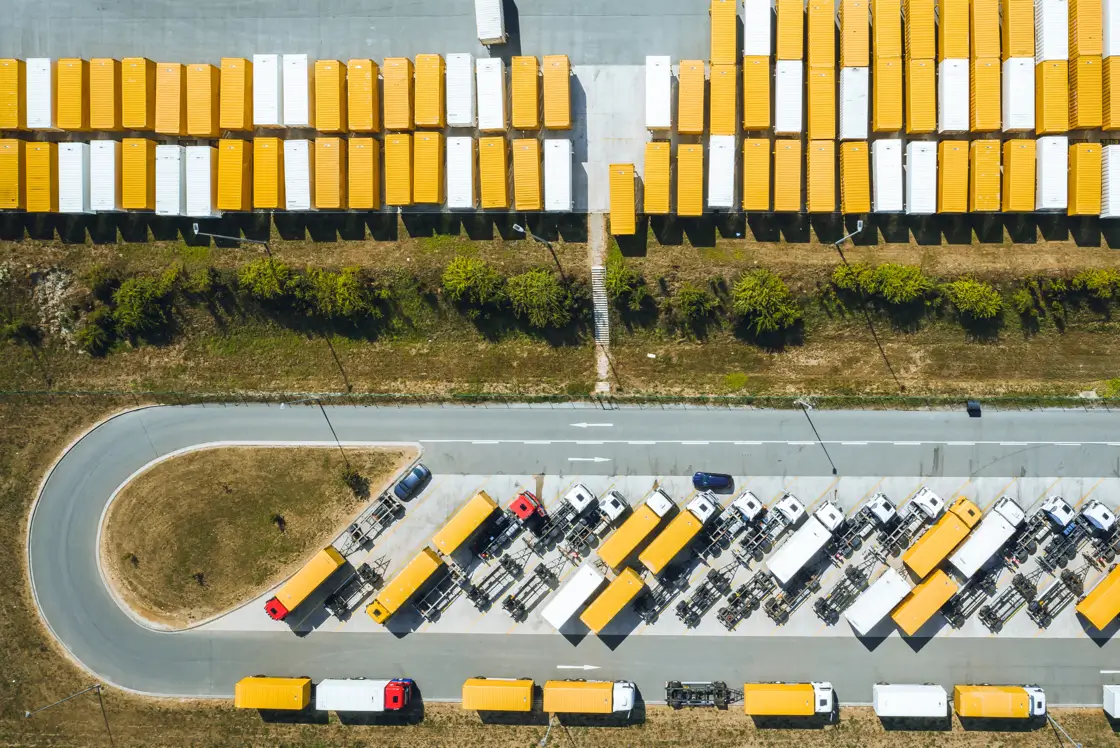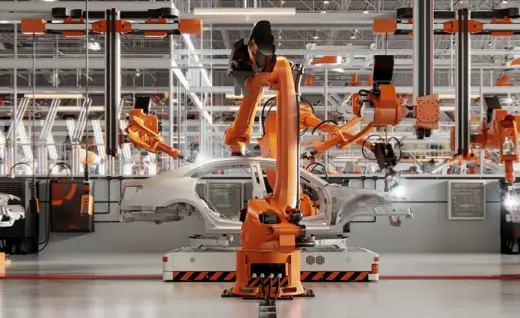The automotive industry's foundation rests on a massive, intricate supply chain that demands absolute precision…
January 29, 2025
Logistic trends emerging in 2025
The logistics industry is always changing, with new and emerging technologies, processes and regulations shaping its future. From using AI-driven data to make more efficient decisions to advancements in last-mile delivery, 2025 will have big changes that are likely to impact your service operations. Below, we’ll take a look at the key trends this year and how they may be able to boost your efficiency and help reduce costs.

5 services-level logistics trends to watch out for this year
With the logistics industry changing all the time, it can be difficult to keep on top of the latest trends, innovations, updated policies and processes, and new technologies. Here are 5 key trends that supply chain leaders should look out for in the logistics industry in 2025.
1. Last-mile delivery innovation
Last-mile delivery remains one of the most challenging parts of supply chain management, particularly in urban areas. In 2025, expect to see a rise in, electric delivery vehicles and a greater level of real-time tracking thanks to continuous advancements in AI.
Why it matters: Embracing these technologies can drastically enhance efficiency, cut costs, improve delivery speed, and enhance customer satisfaction, all while reducing your environmental impact.
2. Rearshoring and nearshoring
European businesses are rethinking global supply chains in response to disruptions and geopolitical risks. Manufacturers are moving operations closer to home with warehousing and forward stock locations to enhance supply chain resilience and build stronger networks with nearby suppliers for agility and shorter lead times.
Why it matters: Reshoring and nearshoring reduce dependency on distant suppliers, improve logistics processes and risk management, improve efficiency, reduce costs, and enhance flexibility.
3. Data-driven decisions and predictive analytics
Logistics companies are collecting more data than ever before. In 2025, predictive analytics and big data will play a significant role in forecasting demand, preventing delays and optimising routes. This allows businesses to stay ahead of the curve and provide customers with real-time updates on their deliveries.
Why it matters: With better data comes valuable insights and better decision-making. Predictive analytics analyse data to allow companies to mitigate risks, adjust quickly to disruptions and maintain a steady flow to meet customer demands.
4. Geopolitical shifts and international trade policies
The logistics landscape is adapting to evolving geopolitical and regulatory environments. Businesses are navigating new safety and security requirements between the UK and EU, and logistics companies are adapting to changing road freight regulations. This means we must all adapt to challenges arising from trade barriers and global conflicts. With major changes in world political leaders over the last year, this could also bring big changes on this front.
Why it matters: Adapting to geopolitical changes ensures business continuity and competitive advantage in a complex global market.
5. The e-commerce boom
E-commerce continues to drive transformation in B2B logistics, pushing providers to adopt new solutions that meet the demands of a rapidly changing market. Dark stores and micro-fulfilment centres are becoming essential for improving delivery speed and efficiency, while advanced analytics allow companies to offer customised logistics solutions that answer the unique needs of their business clients.
Why it matters The growth of e-commerce requires B2B logistics providers to enhance agility and innovation within their supply chains, ensuring they can meet the rising demand for faster, more flexible delivery options. As businesses face increased pressure to offer tailored, on-demand services, investing in reliable logistics solutions is critical to staying competitive and meeting client expectations for speed and efficiency.
Be ready for the year ahead
As we move into 2025, the logistics landscape is evolving at an incredible pace. With more demand forecasting the integration of cutting-edge technologies like AI, sustainability initiatives, and smarter delivery systems, the future looks bright for businesses that are ready to adapt. By keeping an eye on these emerging trends, you’ll be in a strong position to navigate the changes ahead and ensure your future operations remain efficient, cost-effective and customer-focused. Get in touch with our team to discuss the best way forward for your business.



